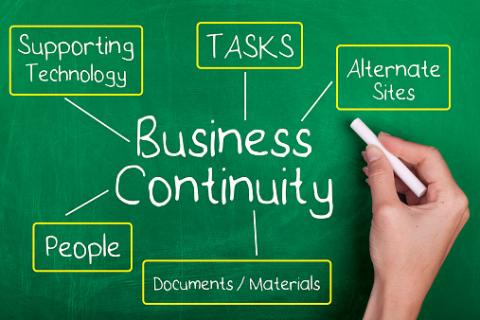Before we get into automating a business continuity plan, let’s define business continuity. Business continuity is the  ability of a company to operate and recover from a significant disruption, like a fire or malicious attack, and get back to a “business as normal” level. With a business continuity plan, business owners are implementing a system with the ultimate goal to continue to meet or exceed their customers’ expectations while minimizing the impact of any negative incidents.
ability of a company to operate and recover from a significant disruption, like a fire or malicious attack, and get back to a “business as normal” level. With a business continuity plan, business owners are implementing a system with the ultimate goal to continue to meet or exceed their customers’ expectations while minimizing the impact of any negative incidents.
Find the Right System
In designing a Business Continuity Management system, you will need to find or develop the right system that not only meets regulatory requirements, but addresses each department in your company and the key components crucial to recovery. The system is also preferably in the cloud for best access.
Document Your Processes
As part of developing an automated business continuity plan you will need to record:
• the objectives or KPIs (Key Performance Indicators) you wish to track during an incident such as recovery time or recovery point for data restoration
• the roles and responsibilities of each team member
• all assets and critical functions
• how team members receive notifications of incidents and how they can report potential disruptions
• external organizations and their relationship and responsibilities including vendors and contractors
• detailed procedures including logistics and resources of all recovery strategies
• detailed procedures, resource requirements, and data restoration plan for the recovery of information technology
• the testing schedule for business and information technology recovery strategies
If any workarounds are possible, the resources required should also be noted and documented when implemented.
Provide Proper Access
Identify who needs access in maintaining the system depending on their role in the business continuity plan. Some of the roles might be:
• the procedure writer
• the document uploader
• anyone who needs access to emergency numbers
• the person contacting employees and stakeholders to notify them of an issue
• the readiness manager
Assign a Readiness Manager and a Backup Person
Train an employee on the clearly defined tasks they would need to perform in the event of a disruption or crisis. The primary readiness manager should also have a fully trained backup readiness manager. As part of their training, they are aware of other teams’ functions across your business.
Practice Implementing Your Plan
Many companies test their business continuity plan two to four times per year. Tests include simulations, structured walkthroughs, and table-top exercises.
Table-top exercises often occur in a meeting allowing for different departments in an organization to review the plan for gaps.
With structured walkthroughs, each team member completes their responsibilities as part of an incident to improve the plan.
Simulated testing introduces all the equipment, supplies, and personnel needed in the event of a disaster to ensure your business can still carry on all critical business functions in the case of an incident. All appropriate staff should receive any updates to the plan after testing.
Automating and testing your business continuity plan for optimization can make a huge impact on how your business rebounds from any crisis. Contact us to discuss how I can help automate your plan.
